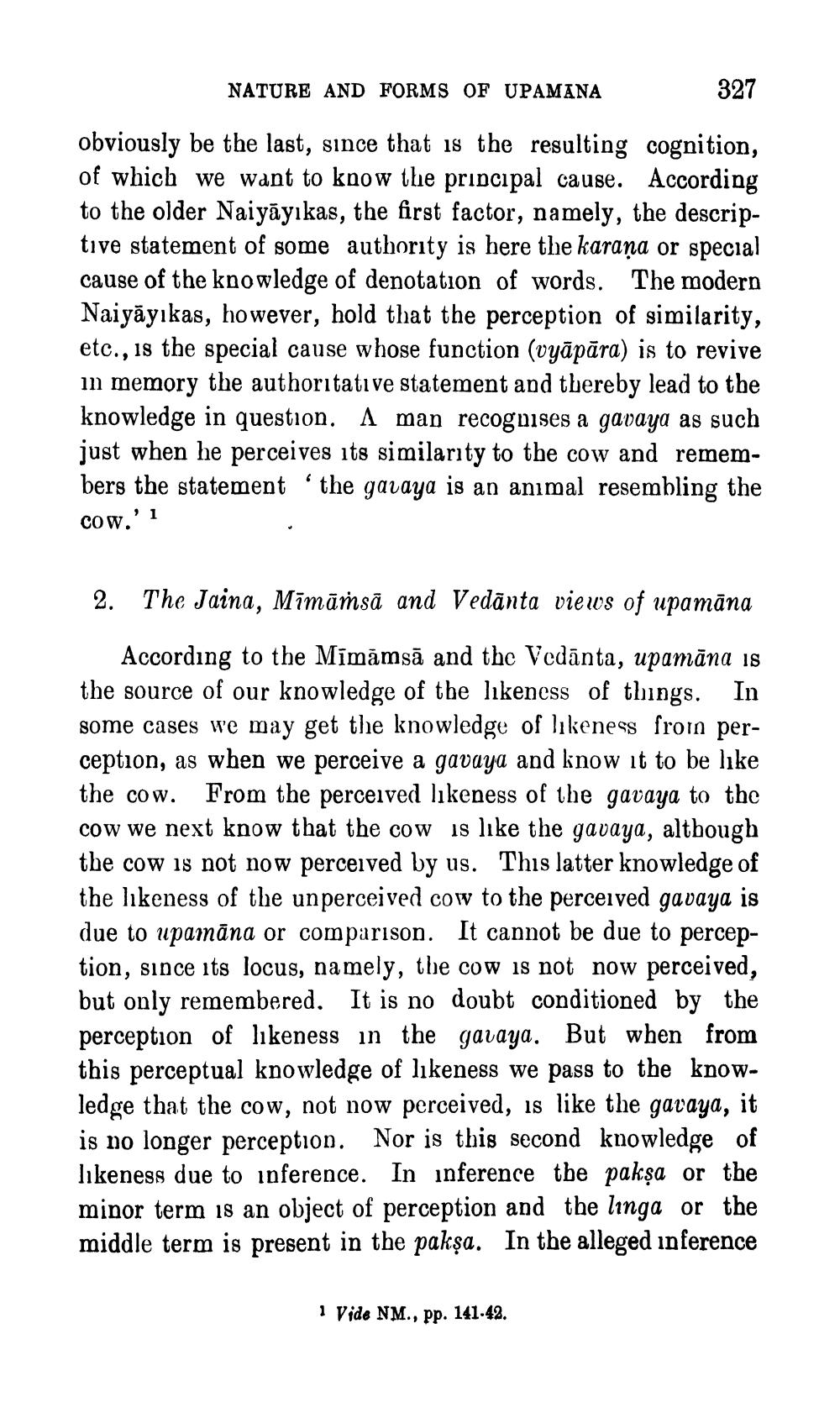________________
NATURE AND FORMS OF UPAMANA
327
obviously be the last, since that is the resulting cognition, of which we want to know the principal cause. According to the older Naiyāyıkas, the first factor, namely, the descriptive statement of some authority is here the karaņa or special cause of the knowledge of denotation of words. The modern Naiyāyikas, however, hold that the perception of similarity, etc., is the special cause whose function (vyāpāra) is to revive in memory the authoritative statement and thereby lead to the knowledge in question. A man recognises a gavaya as such just when he perceives its similarity to the cow and remembers the statement the gavaya is an animal resembling the
cow.' 1
2. The Jaina, Mīmāṁsā and Vedānta views of upamāna
According to the Mīmāmsā and the Vedānta, upamāna is the source of our knowledge of the likeness of things. In some cases we may get the knowledge of likeness froin perception, as when we perceive a gavaya and know it to be like the cow. From the perceived likeness of the gavaya to the cow we next know that the cow is like the gavaya, although the cow is not now perceived by us. This latter knowledge of the likeness of the unperceived cow to the perceived gavaya is due to upamāna or comparison. It cannot be due to perception, since its locus, namely, the cow is not now perceived, but only remembered. It is no doubt conditioned by the perception of likeness in the gavaya. But when from this perceptual knowledge of likeness we pass to the knowledge that the cow, not now perceived, is like the garaya, it is no longer perception. Nor is this second knowledge of likeness due to inference. In inference the pakṣa or the minor term is an object of perception and the linga or the middle term is present in the pakşa. In the alleged inference
1 Vide NM., pp. 141.42.




